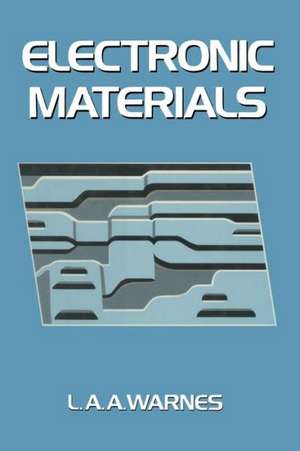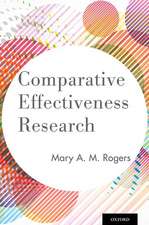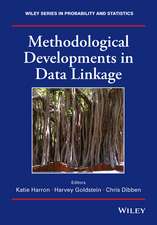Electronic Materials
Autor L A A Warnesen Limba Engleză Paperback – 12 dec 2012
Preț: 369.45 lei
Preț vechi: 388.90 lei
-5% Nou
Puncte Express: 554
Preț estimativ în valută:
70.70€ • 73.100$ • 58.84£
70.70€ • 73.100$ • 58.84£
Carte tipărită la comandă
Livrare economică 31 martie-14 aprilie
Preluare comenzi: 021 569.72.76
Specificații
ISBN-13: 9781461568957
ISBN-10: 1461568951
Pagini: 308
Ilustrații: XII, 292 p.
Dimensiuni: 155 x 235 x 16 mm
Greutate: 0.44 kg
Ediția:Softcover reprint of the original 1st ed. 1990
Editura: Springer Us
Colecția Springer
Locul publicării:New York, NY, United States
ISBN-10: 1461568951
Pagini: 308
Ilustrații: XII, 292 p.
Dimensiuni: 155 x 235 x 16 mm
Greutate: 0.44 kg
Ediția:Softcover reprint of the original 1st ed. 1990
Editura: Springer Us
Colecția Springer
Locul publicării:New York, NY, United States
Public țintă
ResearchCuprins
1 The Structure of Solids.- 1.1 Ideal Crystal Structures.- 1.2 Defects in Crystalline Solids.- 1.3 Binary Phase Diagrams.- Problems.- 2 The Classical Theory of Electrical Conduction.- 2.1 Drude’s Free Electron Theory.- 2.2 The Hall Effect.- 2.3 The Wiedemann-Franz Law.- 2.4 Matthiessen’s Rule.- 2.5 Electromagnetic Waves in Solids.- 2.6 The Plasma Frequency.- 2.7 Failures of Classical Free Electron Theory.- Problems.- 3 The Quantum Theory of Electrons in Solids.- 3.1 Schroedinger’s Equation.- 3.2 The Particle in a Potential Well.- 3.3 The Pauli Exclusion Principle.- 3.4 The Fermi Energy.- 3.5 Fermi-Dirac Statistics.- 3.6 The Specific Heat of a Free Electron Gas.- 3.7 The Penney-Kronig Model.- 3.8 Energy Bands.- 3.9 Insulators, Semiconductors and Conductors.- Problems.- 4 Charge Carriers in Semiconductors.- 4.1 Intrinsic Conduction in Semiconductors.- 4.2 Extrinsic Conduction in Semiconductors.- 4.3 p-n Junctions.- 4.4 The Bipolar Junction Transistor.- 4.5 The MOSFET.- 4.6 Measurement of Semiconductor Properties.- Problems.- 5 VLSI Technology.- 5.1 A Quick Overview of the IC Production Process.- 5.2 Crystal Growth and Wafer Production.- 5.3 Epitaxy.- 5.4 Oxidation.- 5.5 Dielectric and Polysilicon Deposition.- 5.6 Diffusion.- 5.7 Ion Implantation.- 5.8 Lithography.- 5.9 Metallization.- 5.10 Assembly and Packaging.- 5.11 Beyond Silicon.- Problems.- 6 Magnetic Phenomena.- 6.1 Magnetic Units.- 6.2 Types of Magnetic Order.- 6.3 The Hysteresis Loop.- 6.4 The Saturation Polarization.- 6.5 Anisotropy Energy.- 6.6 Magnetic Domains.- 6.7 The Maximum Energy Product.- 6.8 Hysteresis in Multi-domain Magnetic Materials.- 6.9 Magnetostriction.- Problems.- 7 Magnetic Materials and Devices.- 7.1 Soft Magnetic Materials.- 7.2 Materials in Magnetic Recording.- 7.3 Magnetic Bubbles.-7.4 Microwave Devices.- Problems.- 8 Dielectrics.- 8.1 The Electric Polarization.- 8.2 The Dielectric Constant or Relative Permittivity.- 8.3 Types of Polarization.- 8.4 The Local Field in a Dielectric.- 8.5 The Clausius-Mossotti Relation.- 8.6 Energy Absorption in Dielectrics.- 8.7 Dielectric Breakdown.- 8.8 Ferroelectrics.- Problems.- 9 Materials for Optoelectronics.- 9.1 Light-emitting Diodes (LEDs).- 9.2 Solid-state Lasers.- 9.3 Optical Fibres.- 9.4 Signal Detectors.- 9.5 The Solar Cell.- 9.6 Displays.- 9.7 Integrated Optics?.- Problems.- 10 Superconductors.- 10.1 The Economics of Superconductivity.- 10.2 The Phenomenology of Superconductivity.- 10.3 Characteristic Lengths.- 10.4 BCS Theory.- 10.5 The Josephson Effect.- 10.6 High-temperature Ceramic Superconductors.- 10.7 Applications of Superconductivity.- Problems.- Further Reading.- Appendix: The Periodic Table of the Elements.













